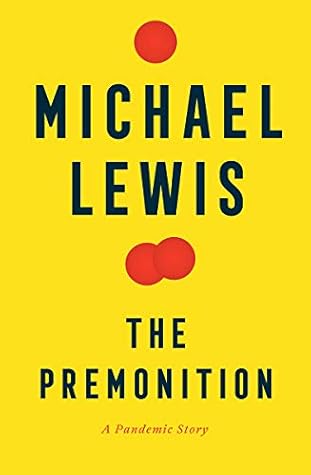More on this book
Community
Kindle Notes & Highlights
“They think my spirit animal is a bunny. And it’s a fucking dragon.”
The story of how the United States more or less invented pandemic planning began when George W. Bush, in the summer of 2005, read a book.
Mistakes in private-sector medicine often never saw the light of day. The grievances they spawned could be resolved quietly, by insurance companies. Mistakes inside a VA hospital had to be reported to Congress, where members of whichever party did not control the White House would set about blaming the president for mistreating veterans.
The Veterans Health Administration treated a quarter of a million Americans a day: it was the second-largest provider of medical care in the world, behind the UK’s National Health Service.
“You can keep mistakes from happening if you can identify the almost mistakes.
the majority of Americans employed by state and local government were employed in education, and he thought, No wonder those unions are so powerful.
there were more than one hundred thousand K–12 schools in the country, with fifty million children in them.
Twenty-five million rode a bus to school. “I thought, Holy crap, half the kids in the ...
This highlight has been truncated due to consecutive passage length restrictions.
On an average day, school buses carried twice as many people as the entire U.S. public transportation system.
The CDC had lots of great people, but it was at heart a massive university. “A peacetime institution in a wartime environment,”
Corporations were interested only in stuff that made money. Academics were interested in anything worthy of publication, but once they had their paper done, they tended to lose interest.
she was struck by how private American forces of mercy were straining to offset America’s public agents of cruelty.
Everyone has a story they tell themselves about themselves. Even if they don’t explicitly acknowledge it, their minds are at work retelling or editing or updating a narrative that explains or excuses why they have spent their time on earth as they have.
There was no system of public health in the United States, just a patchwork of state and local health officers, beholden to a greater or lesser degree to local elected officials.
The people who had managed data and technology for the entire United States government became volunteer workers for the state of California.
The one shot America had at behaving well, and thus saving itself, was to remove the feeling that “the government” was imposing restrictions on people and re-instill the idea that people were imposing order on themselves, to fight a common enemy.
The absence of federal leadership, combined with the fragmented nature of the American health care system, meant that tests for the virus either weren’t available or were being processed too slowly to be of any use.
Like everyone else, the governor had assumed the federal government would make sure that the country had enough testing to track any new virus.
Labcorp and Quest, which were charging the state one hundred sixty dollars for every COVID test and returning the results so slowly that they were useless, were just one example.
As a Stanford graduate student, he had seen previously open and collaborative colleagues clam up the moment some venture capitalist threw money at them.
some companies sought to exploit the moment; others sought to help.
By redirecting 2,666 a day from the big corporate labs, the state of California could save itself $426,560 every day and get results back in time to make a difference.
private U.S. hospitals were either contractually obliged or habitually inclined to send tests to the for-profit labs, and that the for-profit labs had no incentive to move any faster than they were moving, as they got paid either way.
One measure of poverty is how little you have. Another is how difficult you find it to take advantage of what others try to give you.
It was not possible for a vaccine maker, or a society, to adapt to an evolving virus without genomic information. And yet nearly a year into the pandemic, in February 2021, the number of genomes being sequenced in the United States was trivial—less than a third of 1 percent of the virus in people who tested positive.
The United States was sequencing fewer of its genomes than any other industrialized country, and the only reason it was sequencing as many as it was is that a bunch of nonprofits had stepped in to do it, haphazardly, for free.
In the whole of the pandemic’s first year, the tiny Biohub had been responsible for nearly half of all the genomic sequencing in California, and more than 5 percent in the United States.
“The greatest trick the CDC ever pulled was convincing the world containment wasn’t possible,”
the White House converted the position of CDC director from career civil servant to presidential appointee.
“Government—and the value government provides—isn’t just the whim of whoever happens to be elected at the moment,” said Richard. “That government provides continuity across administrations and should be the repository of accumulated institutional experience and wisdom.”


